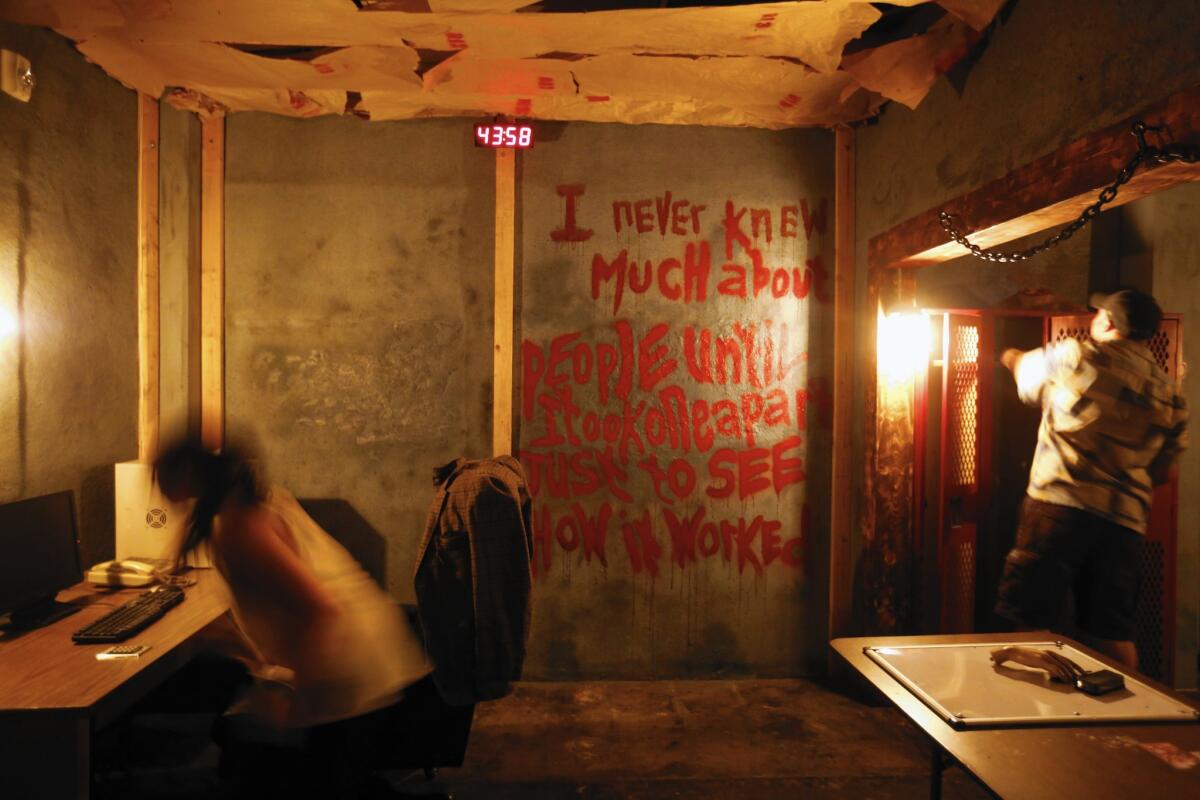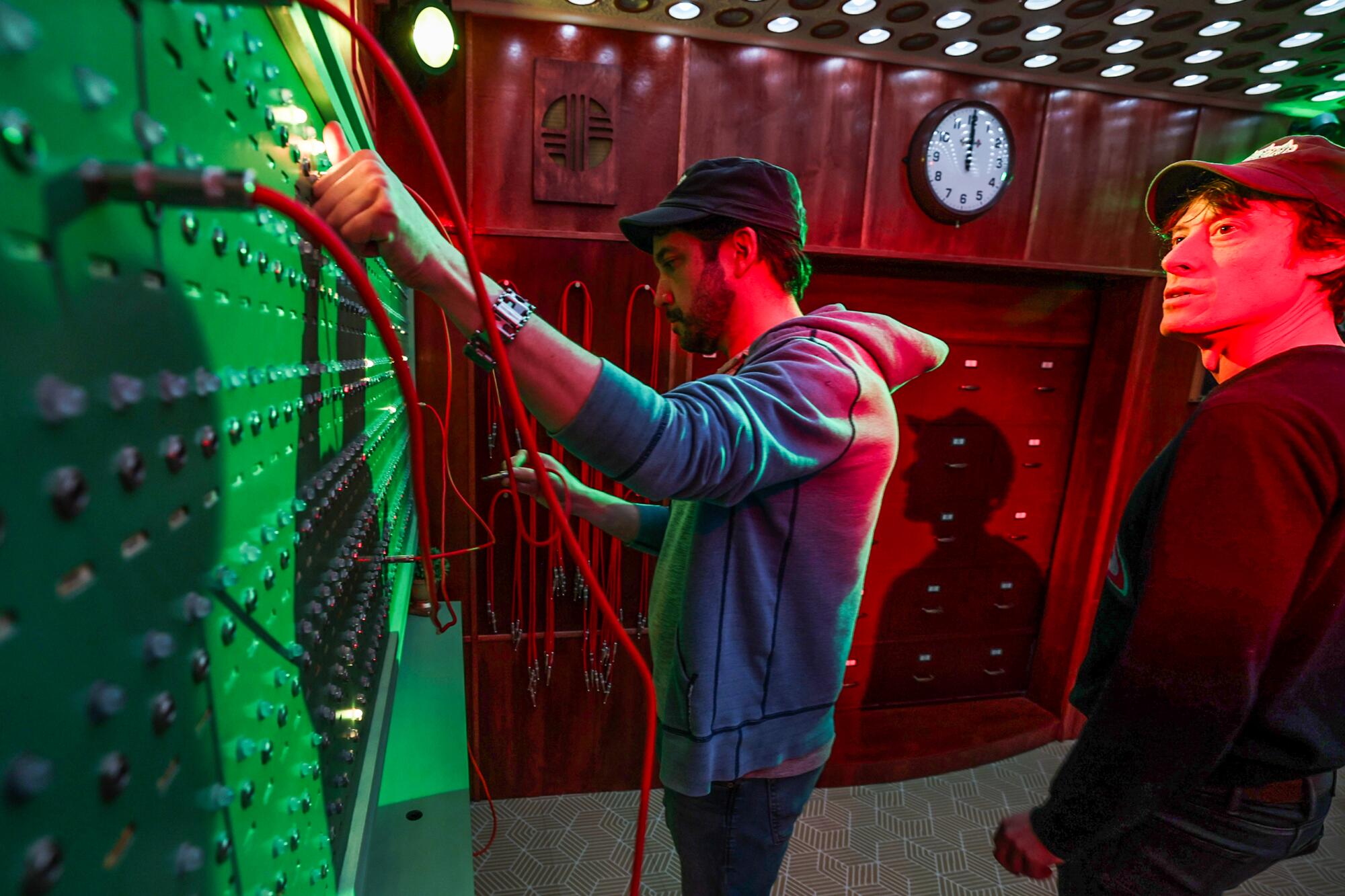Seeking a Fun Challenge? Attempt an Escape Room Boise Today
Seeking a Fun Challenge? Attempt an Escape Room Boise Today
Blog Article
Unlock Hidden Clues and Retreat the Room Before Time Goes Out
The appeal of escape rooms lies in the intricate dancing in between intelligence and time restraint, where individuals have to figure out concealed clues to secure their departure. Similarly vital is the duty of smooth group interaction, as sharing perspectives can frequently light up courses that specific efforts may ignore.
Recognizing Retreat Area Auto Mechanics
Understanding the mechanics of a retreat area is essential for both developers and participants (boise escape room). At its core, an escape area is a physical experience game in which gamers fix a series of puzzles and challenges using ideas, tips, and technique to complete the goals at hand. Typically, gamers are provided a set time restriction to reveal the secret plot hidden within the rooms

From a designer's point of view, the challenge lies in balancing complexity and quality. Challenges must be testing enough to be engaging but not so complicated that they come to be discouraging. Developers likewise need to consider the circulation of the video game, ensuring that clues are put logically which the tale unravels perfectly as gamers progress. Reliable escape space mechanics rest on this delicate equilibrium, guaranteeing a pleasurable and intellectually boosting experience for all participants.
Important Puzzle-Solving Strategies
Grasping necessary puzzle-solving strategies is critical for achieving success in getaway rooms. One foundational strategy is to completely look the space upon entry. Search for concealed compartments, items, and hints that may be easily forgotten. Methodically taking a look at the entire area can avoid essential tips from being missed out on.
One more trick technique is to classify and focus on the problems. Determine whether a puzzle shows up to be a standalone or part of a series. This helps in alloting time and resources successfully. Commonly, initial ideas result in succeeding challenges, forming a domino effect of services.
Keeping a clear record of uncovered hints and attempted options is crucial. Use a central place, such as a white boards or notepad, to write down findings and development. This not just provides a visual help but also stops repetitive initiatives, making sure that every group participant recognizes the current condition.
Finally, using sensible thinking and pattern recognition can substantially boost puzzle-solving efficacy. Numerous challenges are made to examine these cognitive skills. Acknowledge typical patterns, such as mathematical series or color codes, and apply deductive reasoning to split complex challenges. Mastery of these approaches can considerably boost the probability of a successful getaway.
Effective Group Communication
Efficient group communication is critical in navigating and resolving the difficulties offered in escape spaces. Clear and concise exchange of details ensures that all employee get on the very same page, preventing misconceptions and repetitive initiatives. Each participant must be urged to vocalize their ideas and observations promptly, as also minor details can be crucial in opening the next action.
Designating particular duties based upon individual toughness can enhance team efficiency. One person could take fee of noting down ideas, while an additional concentrates on setting up physical puzzles. This organized method decreases turmoil and enhances coordination
Energetic listening is an additional essential element. Employee need to pay very close attention to the insights and ideas of others to leverage cumulative intelligence efficiently. Disturbances and discussing one an additional can bring about missed hints and thrown away time.
Non-verbal communication likewise plays a substantial role. Gestures, eye get in touch with, and body movement can share urgency or accentuate particular locations or things within the area. By maintaining a well balanced usage of spoken and non-verbal cues, teams can browse the facility landscape of escape room challenges a lot more efficiently, maximizing their possibilities of success within the assigned time.

Common Obstacles and Mistakes
While efficient group interaction lays the groundwork for success in escape rooms, a number of typical barriers and challenges can still impede development. One of the most frequent challenges is the tendency to overcomplicate challenges. Individuals typically think services are a lot more intricate than they are, neglecting uncomplicated solutions. This can cause thrown away time and boosted frustration.
One more considerable challenge is the absence of systematic company - best escape room boise. Things and hints discovered early can be failed to remember or lost, resulting in confusion. Developing a method for tracking searchings for, such as designating details locations for solved and unresolved clues, can alleviate this issue
Passage vision, where individuals infatuate on a solitary task or concept, also postures a substantial challenge. This slim focus can stop the team from seeing the larger picture and identifying new possibilities for progression. It is vital to regularly reassess the situation and motivate fresh viewpoints.
Furthermore, insufficient time management is an important barrier. Teams may invest excessive time on one puzzle, ignoring others that could be much more solvable. Alloting time frame for different tasks and continuing to be aware of the overall countdown can assist in far better managing this element. By recognizing these usual obstacles, teams can much better plan for right here and navigate the complexities of getaway spaces.
Enhancing Your Getaway Area Abilities

Critical reasoning and analytical abilities are important. Retreat areas commonly present facility challenges that need logical thinking and association of ideas. Method by engaging in tasks that challenge your cognitive faculties, such as brainteasers or method games.
Time management is an additional critical ability. When to relocate on from a particular problem can stop bottlenecks, allocating time deliberately throughout numerous tasks and acknowledging. Set acting goals and regularly reassess your progress to remain on track.
Furthermore, interest to detail can not be overstated. Retreat spaces are made with ins and outs that require a keen eye. On a regular basis scan the atmosphere for subtle tips or anomalies that might be crucial to your escape.
Lastly, versatility and strength are vital. Escape spaces can be unforeseeable, calling for a flexible click way of thinking. Embrace problems as discovering possibilities and keep a favorable attitude to keep the team inspired and concentrated.
Conclusion
To conclude, understanding a getaway space requires an extensive understanding of its mechanics, the application of strategic puzzle-solving techniques, and the fostering of reliable group interaction. By acknowledging common obstacles and challenges, individuals can much better browse the complexities of the environment. Continuous ability improvement in these areas not only boosts the likelihood of success yet additionally enhances the general experience, cultivating a rewarding mix of cooperation and critical thinking.
Efficient team interaction is vital in navigating and resolving the obstacles provided in escape areas. By preserving a balanced usage of non-verbal and spoken hints, teams can browse the complex landscape of retreat space tests more successfully, maximizing their opportunities of success within the assigned time.
While efficient group interaction lays the foundation for success in escape areas, a number of common challenges and pitfalls can still prevent progression. By acknowledging these usual obstacles, groups can much better prepare for and navigate the complexities of retreat areas.
In conclusion, grasping a retreat room requires a comprehensive understanding of its auto mechanics, the application of strategic puzzle-solving techniques, and the promoting of efficient group communication.
Report this page